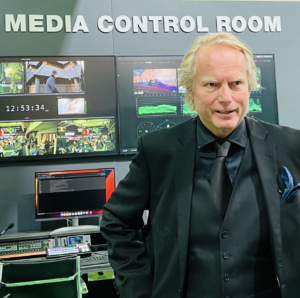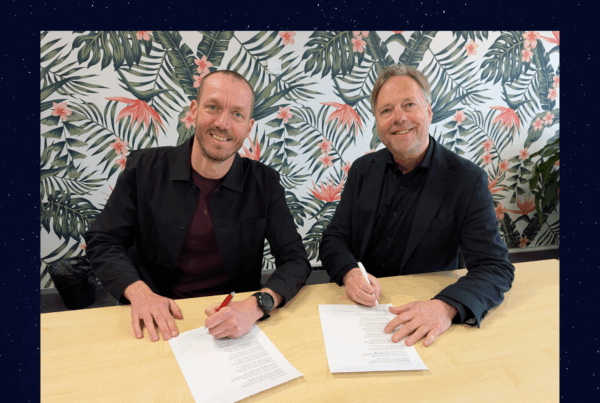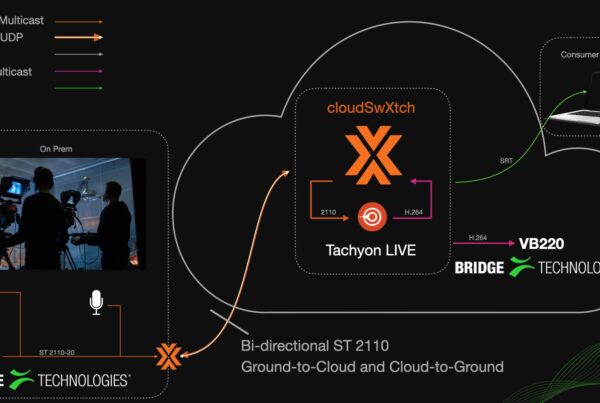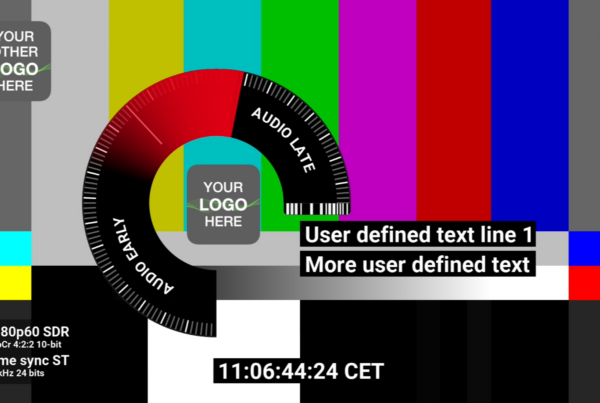Test & Monitor: Look Closely
Advanced Television interviewed Simen K. Frostad, Chairman of Bridge Technologies 
Q. Have lockdown-enforced working practices required a change of approach to T&M?
A. Lockdown may have constituted a pivotal and concrete moment of ‘shift’ in terms of working from home, but a paradigm change had long been brewing – especially in the broadcast market. IP was already facilitating remote and distributed working options before the lockdowns, and these were appealing because of the added possibilities they give to live broadcast; allowing OB vans to create in-the-moment, immersive productions across sports, news or events.
So for us at Bridge Technologies specifically, no we didn’t have to change our approach to how Bridge products tackle monitoring. Tools like our VB440 were designed to join up creatives and engineers working on a distributed or remote basis in real-time long before their hands were forced by the pandemic. It’s precisely because we were already ready with the tools needed to facilitate remote/distributed/socially distanced production that an increasing number broadcasters turned to us during that period; there was no lead time in developing what they needed, so broadcasters could pivot and adapt to the situation quickly. They hit the ground running.
Q. Has there been an increase in virtualised/Cloud-based services?
A. As with any market development, you see an initial surge – almost hysterical – with uptake and people proclaiming it’s a game changer. And then it’s tested in real-world cases, and the nuances of its strengths and drawbacks become apparent. That’s entirely what the situation with the Cloud is now. There are certainly huge advantages to its use – across a variety of applications – but it isn’t a panacea for everything, and broadcasters need to be analytical about their specific operational context.
That’s why at Bridge we’ve kept the options open for them. We have moved many of our VB330 network monitoring services to AWS, and for some users the ability to select what they need, when they need it, at the scale that suits them will be a huge advantage. But we retain the ability to deploy the VB330 on a software, embedded or appliance basis because each carries different strengths and opportunities. Being open and honest with clients and truly considering their context and needs is far more important than shoehorning them down a singular ‘on-trend’ path.
Q. What role will ML and AI play in T&M?
A. A similar answer as above – some caution needs to be shown in relation to the relevance of ML, DL and AI: they’re not one single thing and having a precise definitional understanding of what we’re talking about in relation to those terms will be important. Our probes have been engaging in deep analytics for years, and facilitating automated decisions on that basis; the extent to which those decisions constitute ones made on an ML basis will be a spectrum, not an absolute.
In relation to AI – if you define AI as the ‘mimicry’ of thought, rather than the neural networks of DL – I suppose that it will become increasingly important in making technical systems more accessible to non-technical users. That’s been a Bridge mission for years; we make the complex simple by finding ways to communicate complex data in meaningful ways – be that visually, or more recently – through our addition of Dynamic Explanatory Hovercards, which allow the user to understand the metric they’re looking at, how it’s calculated and why it matters. AI may present a new method for interfacing: where the needs of a non-technical user are ‘translated’ to and from the system in a way that makes intuitive sense even for those who don’t necessarily understand the nitty-gritty of complex IP networks. Which is not to say that we’re trying to eliminate the role of network engineers, merely that – already, even without ‘AI’ as such – Bridge Tools are allowing for the ‘mundane’ tasks to be handled more efficiently by non-techs, so that the techs can invest their time and efforts in more productive activities.
Q. What are the challenges for ensuring QoE for budget-conscious service providers/subscribers with content being consumed over a range of networks and devices?
Who isn’t budget conscious these days? The core part of the question is ‘over a range of networks and devices’. That adds so many layers of complexity and places for things to go wrong. Each one needs a very specific approach to how it is understood and monitored – which traditionally will have meant expensive equipment tailored to each network/delivery type. But more important than the fact that it was costly was the fact that it was chaotic; requiring the engineer to learn a range of systems, keep eyes on a whole host of disparate interfaces, and make space for a host of individual screens.
Avoiding this chaos has always been at the core of the Bridge mission – again, returning to the idea of making the complex simple. Our VB330 facilitates monitoring of pretty much every signal format across IP multicast, video OTT/ABR streaming, video-on-demand unicast, Ethernet trunk micro bursts, PCAP recording, L2TP unpacking and monitoring and general traffic protocol inspection. It therefore significantly condenses the amount of expensive monitoring equipment a broadcaster needs, by putting it all in one tool.
Moreover, it incorporates a huge number of QoE metrics to ensure seamless delivery to the end user including MOS score, ETSI TR 101 290 with Gold TS reference, IP jitter, packet loss, OTT profile alignment, SRT and closed caption verifications. Most importantly, it allows for an engineer to monitor this from a single interface – accessible from one screen, anywhere in the world – and indeed, to join up other additional platform-specific probes, such as the VB252 for digital terrestrial transmissions and the VB272 for satellite – combining them all through our VBC and displaying them at-a-glance through our Remote Data Wall. In this way, it puts all the information in a single place, thus significantly streamlining the efficiency of an engineer’s workflow.
Q. What are the challenges of service provider packaging of third-party OTT channels?
A. Drawing from the answer above, more moving parts equals more potential for failure. Maintaining consistency and harmonising content and format all require careful and meticulous examination of the contribution components. Monitoring has the be end-to-end for service providers to know that they’re not passing on – and thus taking the blame for – the mistakes embedded in the content they’re receiving from third parties.
Perhaps a very specific challenge currently arising in the industry is how to integrate the needs of advertisers into such a diverse range of broadcast formats, and ensuring that delivery of adverts remains consistent across them all. The focus we’ve put on SCTE 104/35 monitoring is crucial to helping broadcasters deliver successfully on this front; giving them metrics that not only allow them to maintain the healthy and consistent playout demanded by their advertisers, but to demonstrate accountability to advertisers by keeping record of the playout integrity being achieved.





